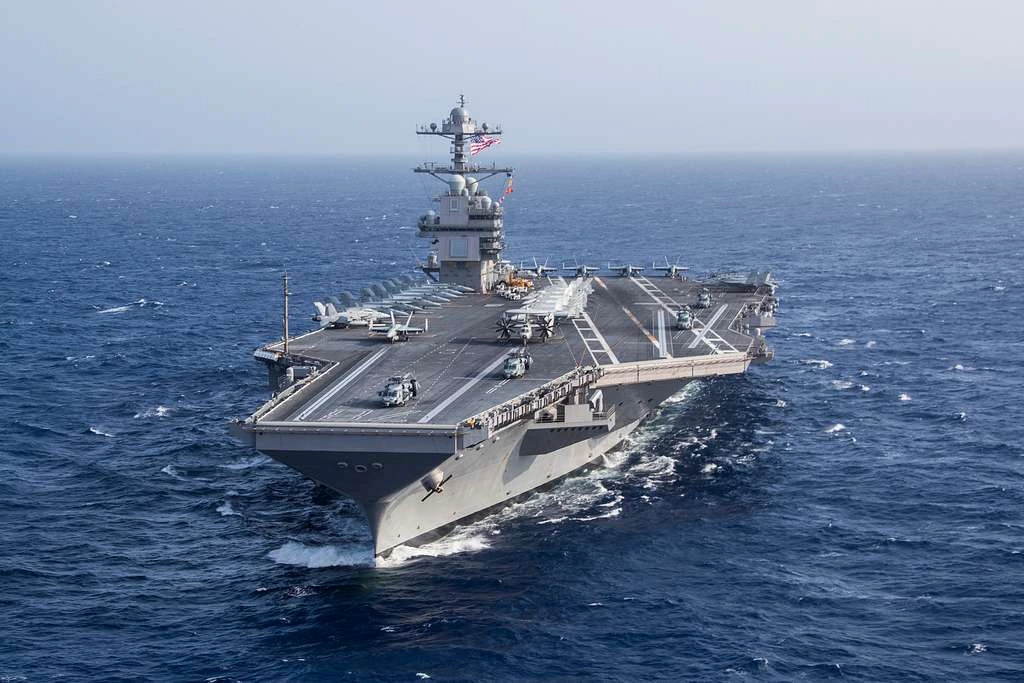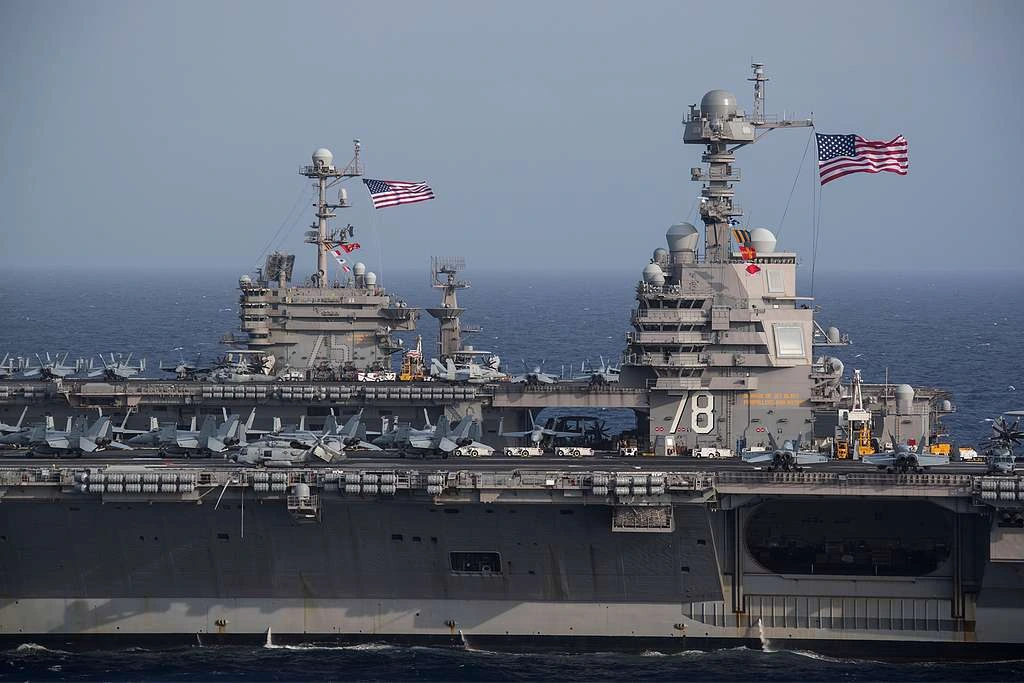
Вашингтон - ВМС США вновь отложили сроки поставки двух своих авианосцев следующего поколения класса Ford.
Джон Ф. Кеннеди (CVN-79), первоначально запланированный на июль 2025 года, теперь будет поставлен в марте 2027 года. USS Enterprise (CVN-80), запланированная к поставке в сентябре 2029 года, теперь отложена до июля 2030 года.
 Фото: PICRYL
Фото: PICRYLАмериканские авианосцы столкнулись с задержкой
Последние бюджетные документы, поданные ВМС США в 2026 финансовом году, подтверждают дополнительные неудачи в программе класса Ford.
John F. Kennedy (CVN-79), строящийся Huntington Ingalls Industries в Newport News Shipbuilding (PHF), первоначально планировался к передаче в 2024 году, затем был перенесен на середину 2025 года, а теперь перенесен на март 2027 года.
Эта двухлетняя задержка объясняется неполной работой над проектом. Продвинутое задержание (AAG) системных и текущих проблем с Усовершенствованный лифт (AWE)— оба из которых представляют собой постоянные проблемы интеграции.
Эти системы уже эксплуатируются на борту USS Gerald R. Ford (CVN-78), который недавно отбыл. Норфолк, Вирджиния (ORF) Европейское развертывание на фоне повышенной напряженности на Ближнем Востоке, сообщает Defense News.
Корпоративный перевозчик также сталкивается с дальнейшим отсрочкой
Судно USS Enterprise (CVN-80), третье судно класса Ford, в настоящее время, по прогнозам, будет достроено в соответствии с новыми требованиями. Июль 2030Согласно тем же бюджетным документам.
Его доставка теперь дважды задерживалась, соскользнув с оригинала. 2028 год нацеливаться на 2029 годИ вот уже почти целый год снова.
Должностные лица ВМС ссылаются на сбои в цепочке поставок в масштабах всей отрасли и доступность материалов в качестве основных факторов задержки. Эти системные проблемы продолжают препятствовать своевременному завершению высокотехнологичных оборонных активов в судостроительной промышленности США.
 Фото:
Фото:Архив NARA & DVIDS Public Domain
Флот борется с целями модернизации флота
Авианосцы класса Ford предназначены для замены стареющих кораблей класса Nimitz, предлагая повышенную энергоэффективность, более высокие показатели генерации вылетов и уменьшенный размер экипажа. Однако периодические нарушения графика подрывают долгосрочные стратегические планы.
Согласно Адмирал. Джеймс КилбиМы отстаем в каждом классе кораблей по разным ставкам, но в течение многих лет. Эти откровенные замечания были сделаны во время недавнего слушания подкомитета Сената по ассигнованиям на оборону.
Для решения этих системных проблем Пентагон инициировал ряд мер:
- Увеличение капиталовложений в американские верфи
- Расширение контрактных наград для стабилизации судостроительной рабочей силы
- Ускорение интеграции беспилотных надводных и подводных аппаратов
- Реконструкция устаревшей инфраструктуры верфи для поддержки производства судов следующего поколения
Долгосрочное влияние на готовность флота
Неоднократные задержки в программе класса Ford могут ограничить способность ВМС поддерживать полностью модернизированные ударные силы авианосцев к 2030-м годам.
Надежность и доступность этих кораблей играют центральную роль в доминировании США на море, особенно в Индо-Тихоокеанском регионе и на Ближнем Востоке, где усиливается геополитическая конкуренция.
По мере того, как военно-морской флот преодолевает инженерные неудачи и промышленные узкие места, давление возрастает, чтобы упростить сроки производства и стабилизировать трубопровод доставки для будущих капитальных судов.
Оставайтесь с нами. Следуйте за нами в социальных сетях для последних обновлений.
Присоединяйтесь к нам в Telegram Group для последних обновлений авиации. Следуйте за нами в Google News
Министр обороны США сомневается в покупке самолетов Boeing E-7
Задержки с доставкой новых авианосцев класса Ford впервые появились на Aviation A2Z.



![Papież Leon XIV odwiedził Błękitny Meczet w Stambule [ZDJĘCIA]](https://cdn.wiadomosci.onet.pl/1/94sk9lBaHR0cHM6Ly9vY2RuLmV1L3B1bHNjbXMvTURBXy8zOGE2ZDA1YzcxMjAyN2EyZjE2Y2VmZWYzNGEzNmRiMC5qcGeSlQMAzNDNB9DNBGWTBc0JYM0GQN4AAqEwB6ExBA)

